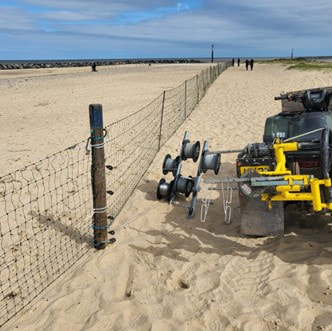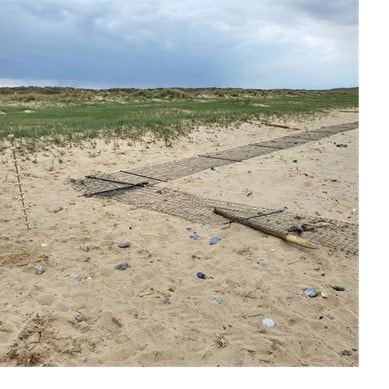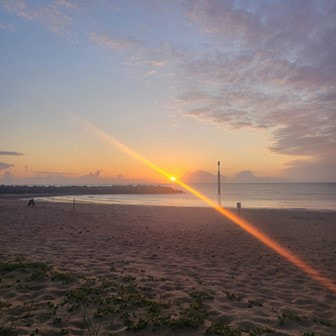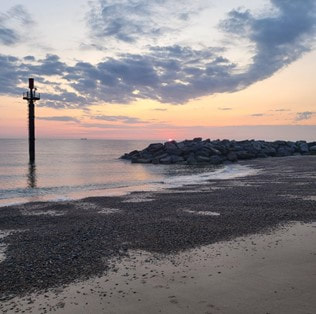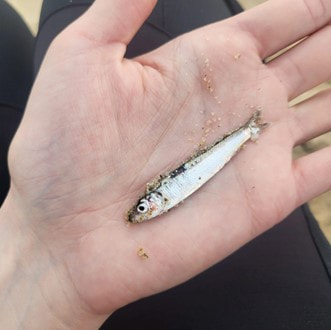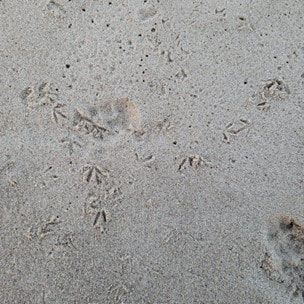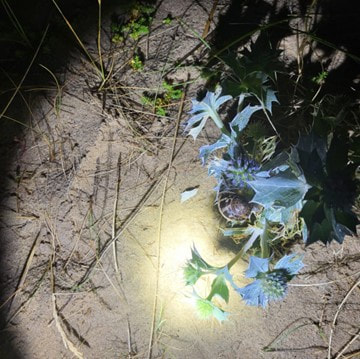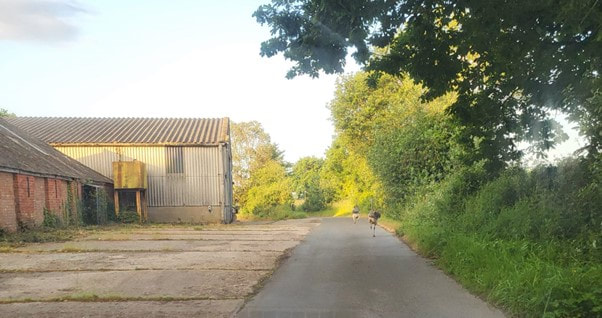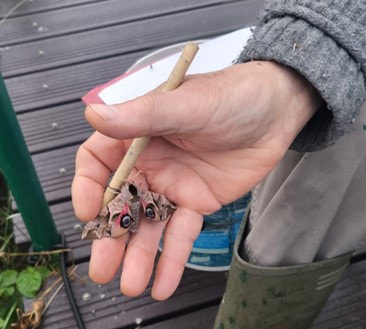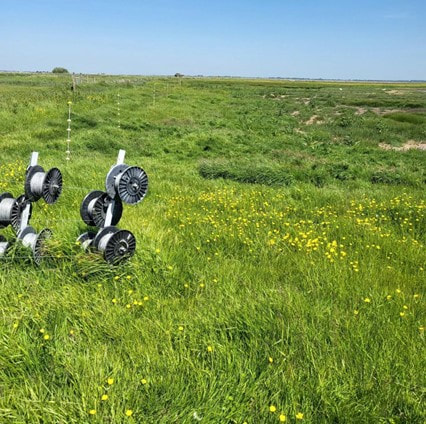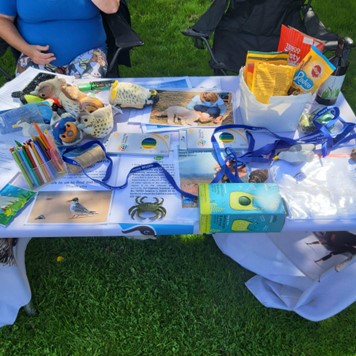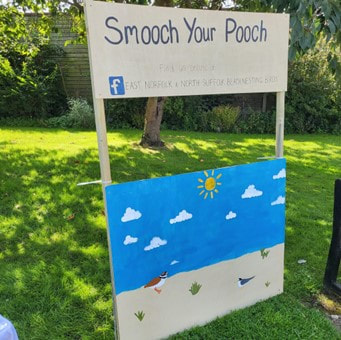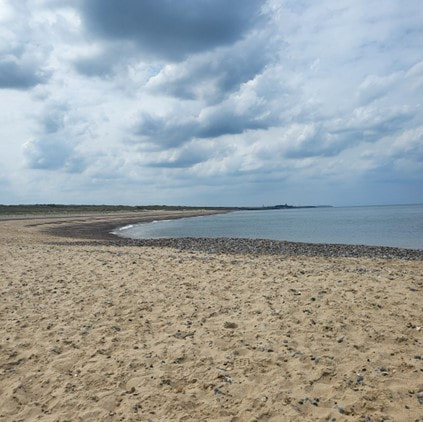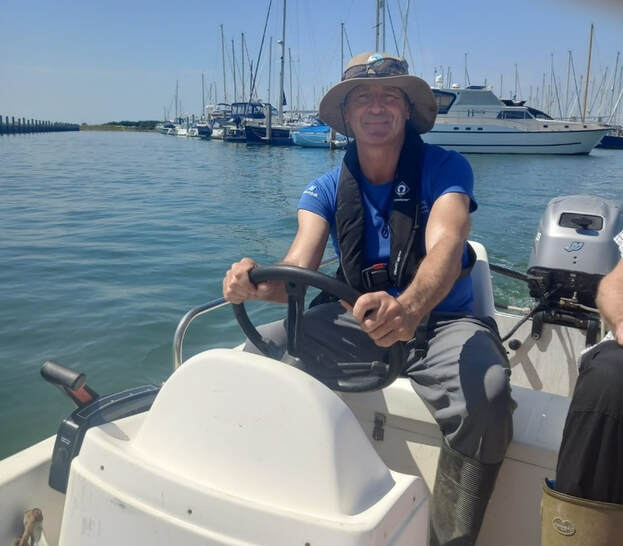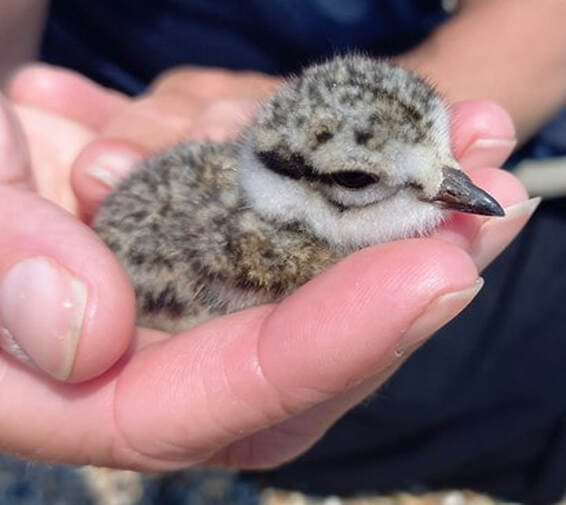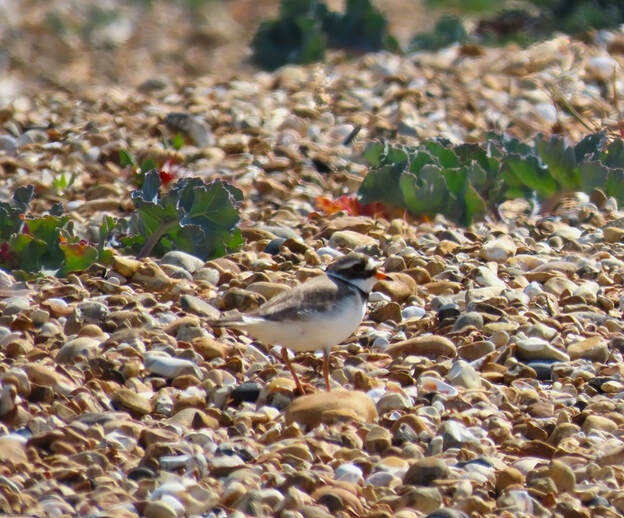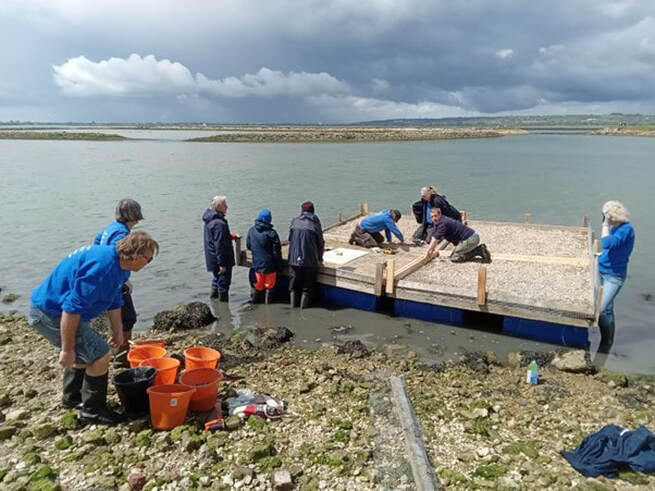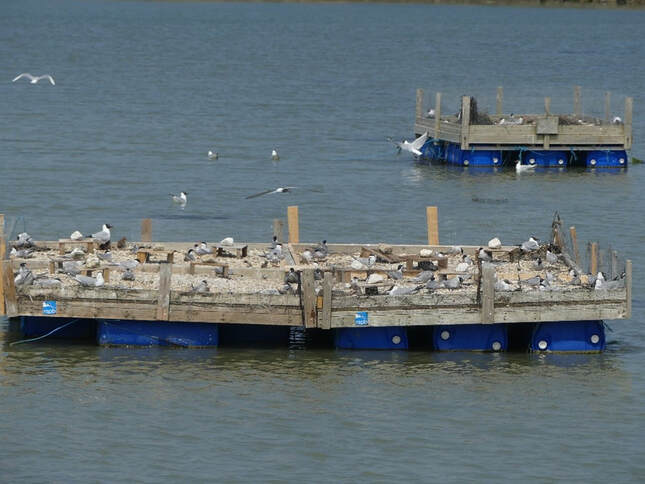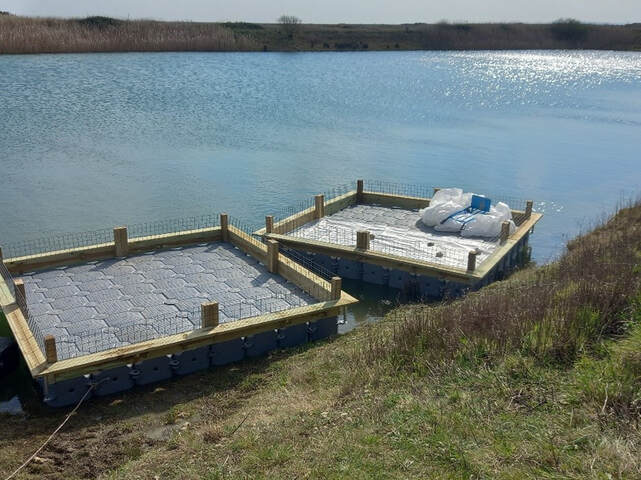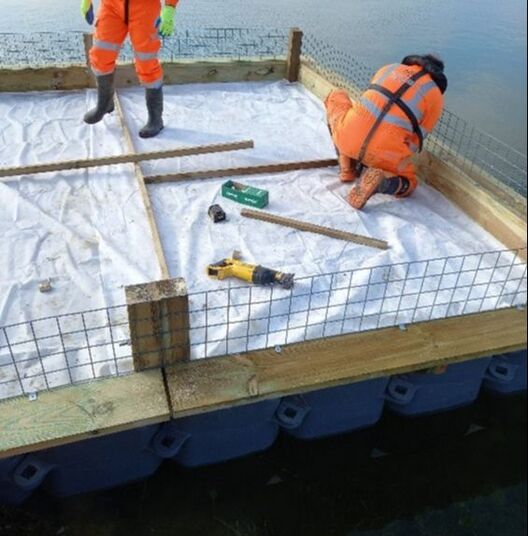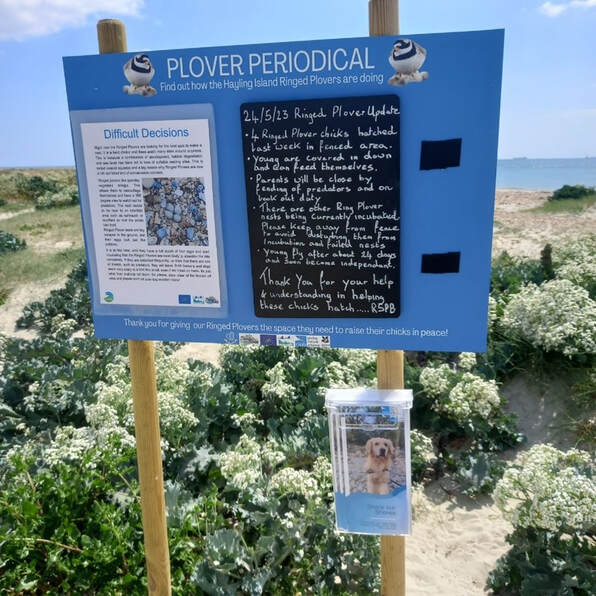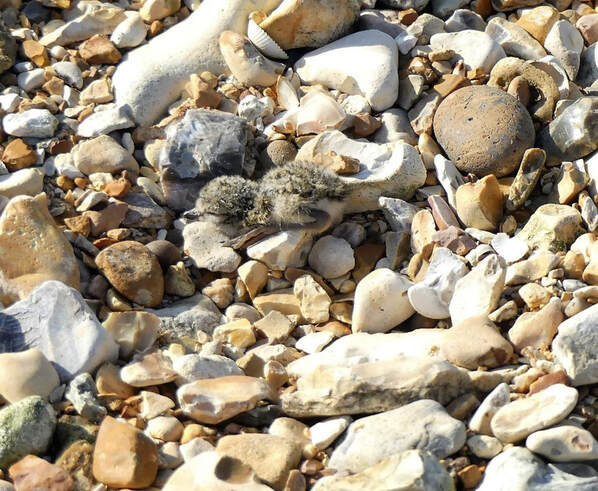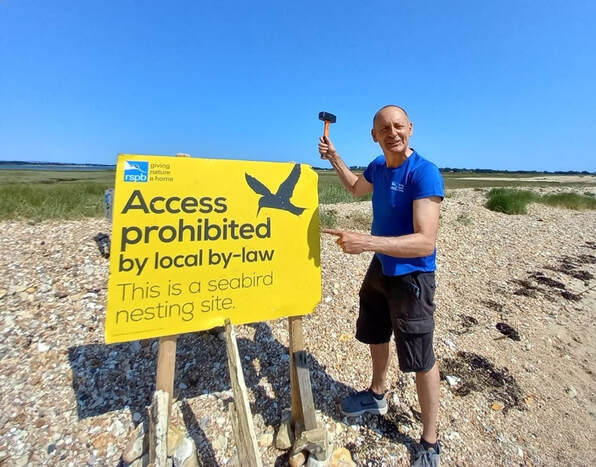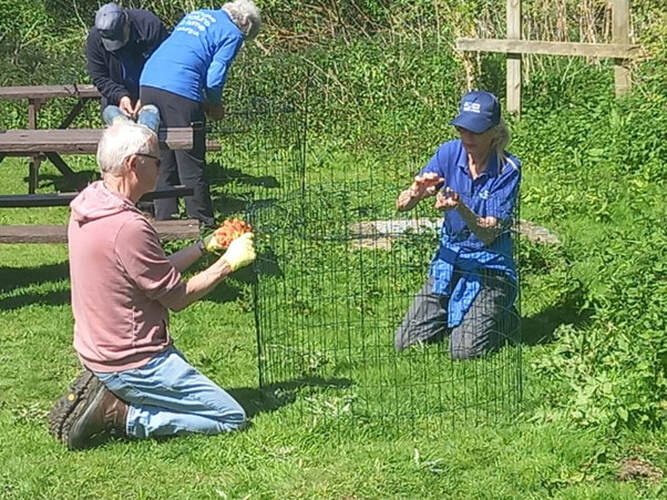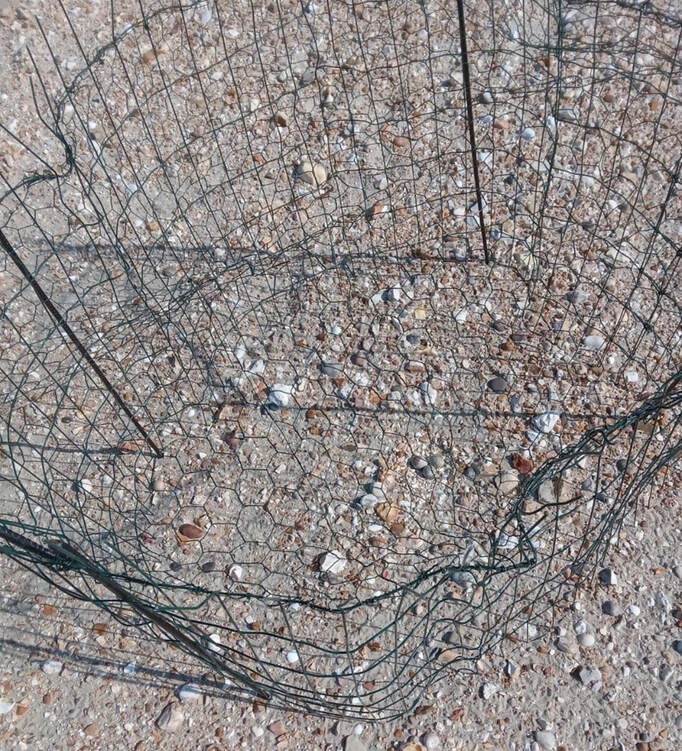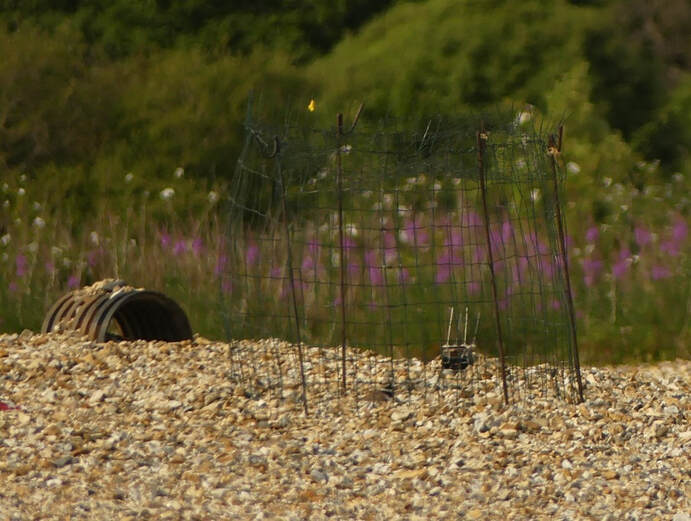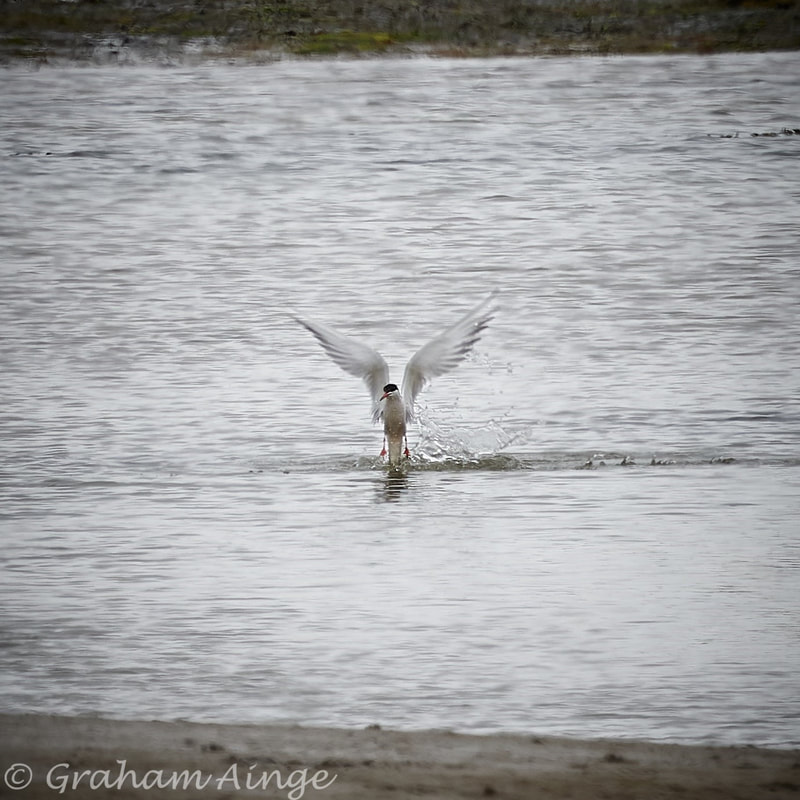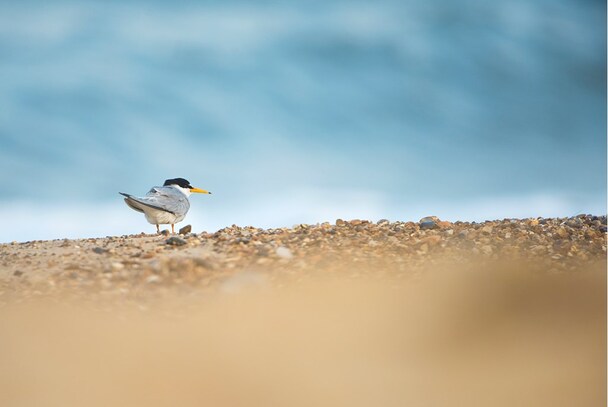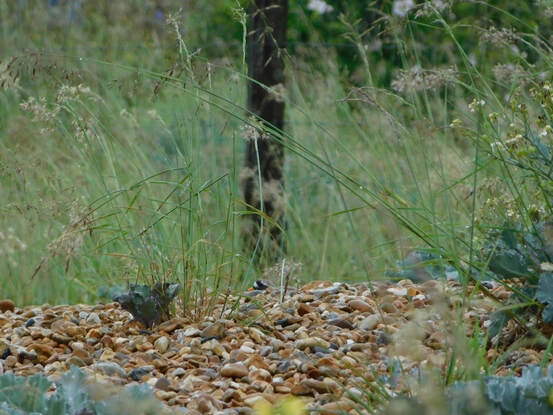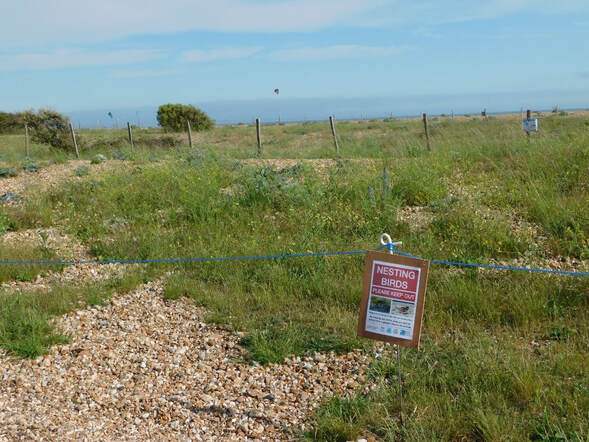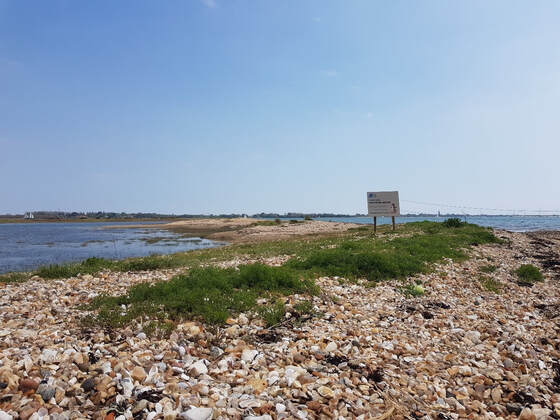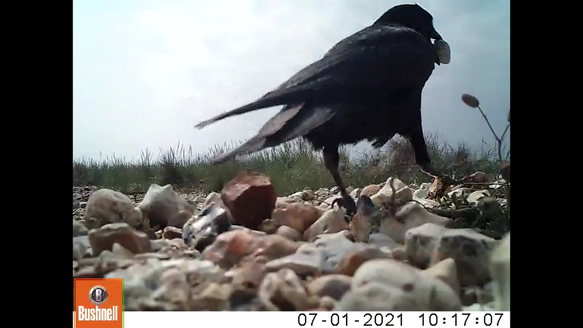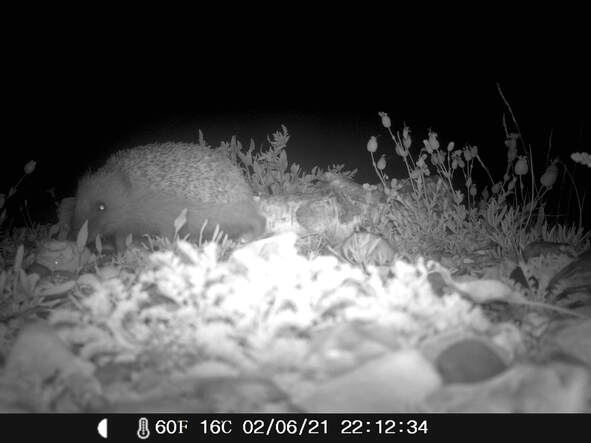|
Blog by Rebekah Watts, Shorebird Warden - South Walney, Cumbria Wildlife Trust Nesting Season Spring has finally arrived and with it, changes are occurring. Flowers are blossoming, days are lengthening and here at South Walney Nature Reserve, birds are carrying sticks and feathers and nests are popping up along our beaches which means that nesting season has begun. Nesting season is the most important time of year. The productivity of our birds is highly important and to assist them during this season, a lot of preparation is undergone during the Autumn and Winter months. Nesting Season Preparations Funding provided by ‘LIFE on the Edge’ (also known as LOTE) helps substantially at South Walney nature reserve when it comes to nesting season. LOTE is a Life Nature project which is lead by the RSPB and National Trust. This project aims to improve the quality of target coastal areas as well as providing recommendations for longer term coastal habitat management and/or creation, with focus on little tern, oystercatcher and ringed plover. LOTE have provided South Walney with equipment for electric fences such as solar panels and energisers, monitoring equipment such as trail cameras and thermal scopes and permanent hybrid fencing. LOTE also provides funding for a seasonal shorebird warden to work with the sole purpose of protecting coastal nesting birds. With the help of LOTE, we at South Walney are able to provide protection to nesting coastal birds throughout the season. Preparation for nesting season begins in late August / early September. At this time, we start checking our permanent fences for damage and repairing them. Debris is removed and the gates are shut to stop livestock from entering. Holes in the fence are repaired, wire is replaced and holes dug by predators into the fenced area are filled in. The area around the electric fence is cut back with a brush cutter to reduce interference with the wires. The inside of the fence is also brush cut to create the correct nesting habitat. The fence is now ready to be made live closer to the start of the season. During the nesting season, temporary electric fences and signs explaining what we are protecting are erected. Before this, the area around the perimeter of the fence is brush cut and litter picks are completed. During this season and the previous season, an area of land to past the boundary wall of the reserve to the north was fenced. This land was kindly temporarily loaned to South Walney Nature Reserve, as little terns choose this location to nest. The habitat is shingle and sand, close to the sea which is a perfect location for terns to nest and fish. To provide more habitat for nesting coastal birds, a tern raft is moved into place, floating in the pool of the oyster farm. The anchors are dropped, a camera is installed and the raft is ready for occupants. There is a permanently placed raft which is used by the same Oystercatcher pair each year. The parents are currently sitting on eggs there now! Chick shelters, nest cages and cameras are important to protect vulnerable chicks and adults from predators and extreme weather. Shelters of different shapes (for different chicks) are placed on the tern rafts, inside the fences and along the beaches to provide shelter and safety to chicks. Cameras are crucial for monitoring wildlife. They are placed directly on nests and at crossing points to catch predators. Cameras are placed out early in the season and checked regularly throughout the season. New to 2024 A new sound lure and hand-crafted little tern and herring gull decoys were created in 2024. In an attempt to attract a mixed gull colony of herring and lesser black backed gulls to nest in a new location, 10 adult and 6 juvenile herring gull decoys were created and placed in a temporary 8 strand fenced area. This fence was put in place at the start of the season with decoys and a trail camera, and has successfully attracted first year herring gull visitors since the addition of the decoy birds. We hope to see these gulls return next nesting season! To attract little tern, 40 little tern decoys were crafted and placed on the tern raft, in the temporary 12 strand fence to the north of the reserve and in the fenced area on Foulney island nature reserve. In combination with the decoys, a sound lure was created and is played on loop in the daylight hours. This has successfully attracted 12 pairs of little terns and we are hoping to see chicks in the next couple of weeks. Good Luck, Birds! Now that fences are live, decoys and sound lures are in place and cameras are being regularly checked, it’s up to the birds to raise their young. We wish them the best! Link to first South Walney blog by Bekka: LIFE at South Walney Photo credits: Rebekah Watts
0 Comments
Thanks to Rebekah Wall, RSPB Little Tern Volunteer, for this lovely guest blog. Conservation is something you’ll commonly find on the news but is such an important topic for the generation these days. To take part in it is something even more important and wonderful. Conservation is my career path and to have the option to become a volunteer is very rewarding and has been something I have done since graduating from University. I applied to be a bird warden for the RSPB in April (2023) for something new to volunteer for, to improve my mental health, and to be more involved in the current need to support conservation and breeding opportunities for the Little Terns. To be given the opportunity to work amongst RSPB staff and experienced volunteers and to be working closely with the Little Terns, a thrill of excitement made me ecstatic, and I was looking forward to starting my shifts. As well as actually working alongside the Little Terns, the fences needed to be put up at Winterton-on-sea and at Eccles. Many volunteers popped up to help and it was interesting to talk with the new and experienced volunteers about what to expect from a shift and how to engage with the public and their dogs. During the induction, one of the staff spoke about the night shifts, the golden hour that we could witness, and the experiences we could obtain. Instantly I knew I wanted to do as many night shifts as I could, fitting it around my day job. I began my first night shift at 10 p.m. in the middle of June, wrapped up warm with many layers, thermals, waterproofs, a woolly hat, gloves, flask filled with hot coffee and snacks. Sitting in a camping chair can be very comfy until it gets very cold. Fortunately, blankets were available to use and sudden spurts of bats and moths flew over one's head and gave me a buzz, excitedly looking for more wildlife in the sky. The night shifts were so different from the day shift. As said by previous volunteers, you get to witness the golden hour which was so magical to see. You have to watch the birds wake up from their hiatus as they are always on the watch, protecting their eggs, chicks, and colony. To witness them fly up, fluttering over the sea and quickly in dive to catch any amongst the Clupeidae sp. to give their chicks the first meal of the day. Listening to their calls is so distinct, made my heart flutter. And the first time I saw a chick, my heart burst into happiness, knowing for a fact this is the environment I want to be in. How small they are! Little balls of speckled fluff. During the night shifts, you literally have to be the watchful eye, a protector to help the success of the breeding Little Terns. To physically chase away the predators with a shaker (a bottle with small stones and pebbles in it). Whether they are flying raptors and four-legged mammals - muntjacs for the eggs, foxes for the eggs and chicks, a few domestic cats now and again, and the occasional squirrel. Finishing a night shift every morning is very different from the last. One morning, driving on my way home from a night shift I happened to come across a situation quite bizarre. Two Rheas were running on a country road right in front of me in the car. Completely bewildered I thought I may have been over-tired. I managed to snap some shots and pass them on to the Little Tern group. A few hours later, I was informed that they were from a farm and had escaped, I saw two of the twelve that were roaming around Norfolk. As well as strange occurrences, I was able to witness a couple of moth traps being unveiled! The beauty of the elephant hawk moths to the peppered moths was amazing and enticing to watch. Working as a bird warden is so much more than looking after the birds, you are able to gain transferable skills, work as a team, get the chance to take part in other events such as witnessing kestrel chicks being ringed, working on RSPB sites such as Berney Marshes engulfed in magical greenery and wildlife, many bird species and mammals and public days such as ‘’Smooch your Pooch’’ promoting dogs on leads during the breeding season of the Little Terns. Being given the chance to take part in volunteering alongside the RSPB for the past five months has been an amazing opportunity that I have thoroughly enjoyed and look forward to the next season.
Hello, my name is Mark Appleton and work as Beach Nesting Bird Project Officer along the Solent. I joined the RSPB in this role, this March 2023. So, what does a Beach Nesting Bird Project Officer do? I will attempt to explain some of the tasks I have undertaken so far. Thanks to the LIFE Programme (LIFE on the Edge) and the Solent Seascape Project, I was recruited to help change the fortunes of shore nesting birds on multiple sites, both on and off natures reserves across the Solent. This even includes working at the Browndown Military Training site. The area of Solent that I am responsible for ranges from Hurst Spit on the Western Solent to Pagham harbour on the Eastern Solent. Spread out across the Solent’s shingle and saltmarsh coasts, a diverse range of coastal ground-nesting birds make their home each summer. Ringed Plover, Oystercatcher and Little Tern regularly attempt nesting on our shingle beaches looking for new sites each year to raise a new generation as well as returning to old favourites. At the time of writing, we are in the very busy period where all our beach nesting birds are beginning to hatch, and a lot of my time is spent monitoring and trying to protect them Dense colonies of Sandwich Tern, Black-headed gull and Mediterranean Gulls take advantage of the water surrounded shingle and saltmarsh islands whilst common tern use a mixture of sites varying from man made structures to secluded shores. All these species are facing the growing challenge of fitting in on our very busy coasts. That’s where we are aiming to make a difference. I have been involved in the creation and deployment of these manmade structures, rafts for the common terns, working both with the RSPB Pagham wardens and volunteers to implement. Another part of the role is to develop, empower and support teams of volunteers to deliver shore nesting bird protection. Both the RSPB Pagham volunteers and RSPB Gunner point volunteers have been essential in providing support. Without them a lot of the jobs would not get done. At Hayling Island Gunner point this year we have continued developing the Ringed Plover Project that was set up by local conservationist Trevor Codlin. With the help of volunteers, we have cordoned off a section of the beach with mesh fencing to give Ringed Plover space to nest and bring up their chicks free from human and dog disturbance. The volunteers helped to install the fencing and regularly patrol the area to educate, raise awareness and inform visitors about how we can help Ringed Plover here by giving them lots of space and keeping away from fenced off areas so they can incubate their eggs without nest failures. I have created a Whatsapp group for the project so we can all provide each other updates on patrols and monitoring results. At the time of writing, we have had 3 successful nests with a total of 8 chicks with 2 very close to fledging. Unfortunately, our Ringed Plovers cant read and one family regularly wonders outside the fence. Only this week a dog was seen chasing the family and was only saved by the adult male luring the dog away by flying along the beach with the dog in close pursuit. This is why our brilliant volunteers are so important in raising awareness. To support our volunteer rangers I have created signage, a periodical update board and leaflets to inform the public. Deploying and creating signage is a very important part of the role as areas of prime nesting area need protecting Monitoring of breeding Ringed Plovers has identified that predation is one of the main factors in preventing hatching success. High levels of predation are likely to be exacerbated due to loss of good quality habitat, rising sea levels, and increasing human disturbance which could be resulting in birds nesting in sub optimal conditions and closer together. This year I have been part of the RSPB scientific study to test the effectiveness of nest cages on the hatching success of beach-nesting Ringed Plovers. So far the results are very encouraging and trail camera footage has shown protection from foxes, carrion crows, dogs, kestrel and even a tawny owl. An important part of the role is to continue building partnerships across a broad range of organizations so that we collaborate and achieve optimum success in trying to help nature. I try to provide updates and communication between organizations to achieve this and collaboration has include RSPB Pagham, Natural England at North Solent Nature Reserve, Hampshire Countryside Service at Lymington and Keyhaven Nature Reserve and Hook with Warsash , Browndown Military Training camp and many amazing volunteers. I hope this gives a flavour of some of the tasks involved with the role. If I had to summarise the role I would say: -
Buckler’s Hard Website: https://www.bucklershard.co.uk/events/conservation-awareness-day/ Facebook: https://fb.me/e/3h8QvEutw
Happy summer holidays but please remember to look out for our beach nesting birds and give them lots of space with dogs under close control 😊 Thank you for reading Mark Huge thanks to all our volunteers who help protect our breeding and wintering coastal birds! 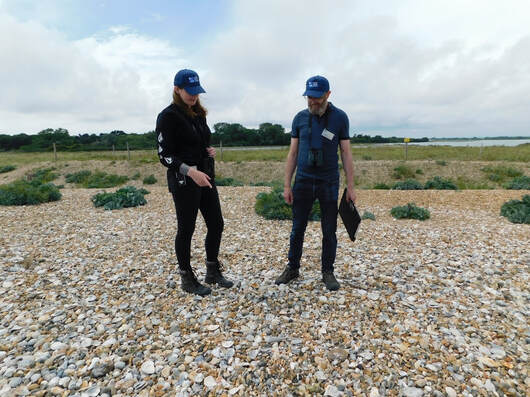 Our Beach Nesting Bird volunteers at RSPB Pagham Harbour discussing the challenges shorebirds face and why it is important for visitors to give them space. Here, they have been using a model Little Tern and photos of nests to help show how vulnerable to disturbance beach nesting birds can be. Photo Credit: Sophie Yeomanson This guest blog is by Alex who kindly shares her experience of volunteering. Why get involved? When you have been busy working for other people, there is nothing more rewarding than working for wildlife. I started volunteering with the RSPB 4 years ago when I retired and was looking for some sort of activity to keep me busy. To say I have been on a steep learning curve would be an understatement. Up until then, I had not marvelled at a pair of owlets, peered into a bee nesting hole, or observed sea birds diving into the lagoon for food. I knew very little about the natural world, so volunteering allowed me to learn at my own pace. This past spring and summer I joined the beach nesting bird team at RSPB Pagham Harbour and Medmerry with my husband. Whilst I was chatting to people visiting and giving them information to take home, my husband was using his camera to capture the wildlife in all its glory! I love sharing my knowledge of the wildlife to visitors, especially to the children who are so eager to learn. No dinosaurs seen yet though! I also love being part of a great team of people who share their knowledge and experiences with me. Favourite part of being with the Beach Nesting Bird team?
“I especially enjoyed engaging with inquisitive kids that wanted to “spot the tern” and then know more. I liked speaking to people who were interested in what we are trying to achieve.” How can you help? We are looking to expand this team across the wider Solent area in time for the next breeding season to help safeguard other nesting sites and provide a joined-up network of safe spaces for seabirds and beach nesting waders. Find out how to get involved here: https://www.rspb.org.uk/get-involved/volunteering-fundraising/volunteer/ Or you can enquire through the LIFE on the Edge website: https://www.projectlote.life/ Blog by Sophie Yeomanson, RSPB Community Shorebird Officer In the Solent, beach nesting birds are faced with many threats, from increasing visitor pressure, to loss of suitable habitat for nesting. Every year, colonies of Little, Common and Sandwich Tern migrate to the Solent from Africa to nest on our shingle beaches, alongside Ringed Plover, Oystercatcher, Black-headed and Mediterranean gulls. My name is Sophie and here is some insight into the work I have been doing for the past three months as a Shorebird Officer for LIFE on the Edge in the Solent. Initial Monitoring Monitoring the threats to breeding birds on a site is important, as this will inform management practises to mitigate against them. Much of the work we have been doing in the Solent over the past few months has involved watching nests, recording disturbances, and monitoring how the nesting birds have been reacting to these disturbance events. Discovering how the beach is used by people and other wildlife is an important first step to finding ways to protect the nesting birds. Different species react differently to threats, for example, we have seen ringed plovers performing a broken wing act when they think their nest may be under threat from an inquisitive dog, intending to lead the perceived predator away from the young before flying off. Other species will mob the threat, an example of this being oystercatchers noisily attacking drones flying overhead, whilst leaving their nests exposed to the elements. Practical measures can be taken to prevent this from happening, such as installing temporary fencing to cordon off areas on the beach and installing signs facing out towards the sea so that people approaching from the water know where to avoid when landing. So far in the Solent, temporary fencing has been installed across three different sites for the first time, giving refuge to multiple families of little tern, ringed plover, and oystercatcher. Trail cameras are also extremely useful tools for helping us to monitor nests. The cameras collect snapshot footage of a fixed location over time, using motion detectors and timers. These have allowed us to monitor the nesting sites without being present 24 hours a day, so we can see what happens when we aren’t looking and plan protection measures for the future. Across the Solent beach nesting bird sites, we have been locating ringed plover and oystercatcher nests and setting up trail cameras to monitor them. Footage from this year has revealed that egg predation (by carrion crows and hedgehogs) has been a cause of nesting failure at one site, where nesting success had not previously been monitored in depth. Because of these findings, decisions can be made about how our team can safeguard nests for the next breeding season to hopefully allow the nests to progress past the incubation stage. Our Excellent Volunteers Engaging with members of the public is another vital part of our work in the Solent to make space for birds to nest. Whilst practical measures to protect nests, such as temporary fenced off areas, work to protect the birds within them, birds can’t read the signs and don’t always choose to nest in the areas we create for them. That’s where community engagement comes in! Our wonderful new team of beach nesting bird volunteers have been doing an excellent job talking to beach visitors around the Solent about the species we share our shores with, and promoting the small changes they can do that will make a big difference to the success nesting birds. Having a daily volunteer presence on the sites has proved to be really important, and visitors have thoroughly enjoyed learning about the birds, often astonished by the images presented to them of eggs laid in shingle scrapes or of tiny camouflaged chicks on the beach. For many of the visitors, conversations with the team are the first they’ve heard of a ringed plover or little tern, let alone seen one on the beach. Raising awareness of these “invisible” species through community engagement will be pivotal in helping these birds to thrive in the future. 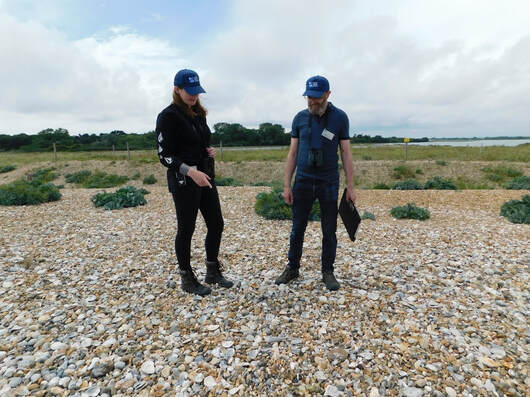 Our Beach Nesting Bird volunteers at RSPB Pagham Harbour discussing the challenges shorebirds face and why it is important for visitors to give them space. Here, they have been using a model Little Tern and photos of nests to help show how vulnerable to disturbance beach nesting birds can be. Photo Credit: Sophie Yeomanson How can you help? We are looking to expand this team across the wider Solent area in time for the next breeding season to help safeguard other nesting sites and provide a joined-up network of safe spaces for seabirds and beach nesting waders. Find out how to get involved here: https://www.rspb.org.uk/get-involved/volunteering-fundraising/volunteer/ Or you can enquire through the LIFE on the Edge website: https://www.projectlote.life/ |
Archives
April 2024
Categories
All
Photo credits: Oystercatcher by Katie Nethercoat (rspb-images.com)
LOTE Logo credits: Saskia Wischnewski |










